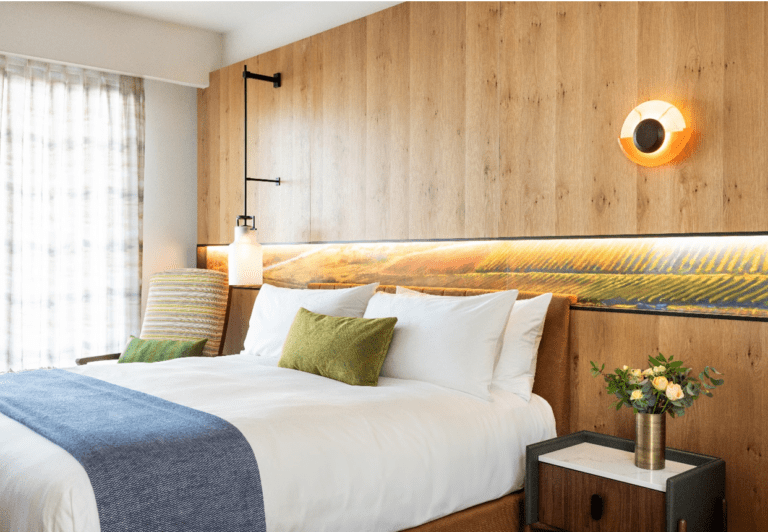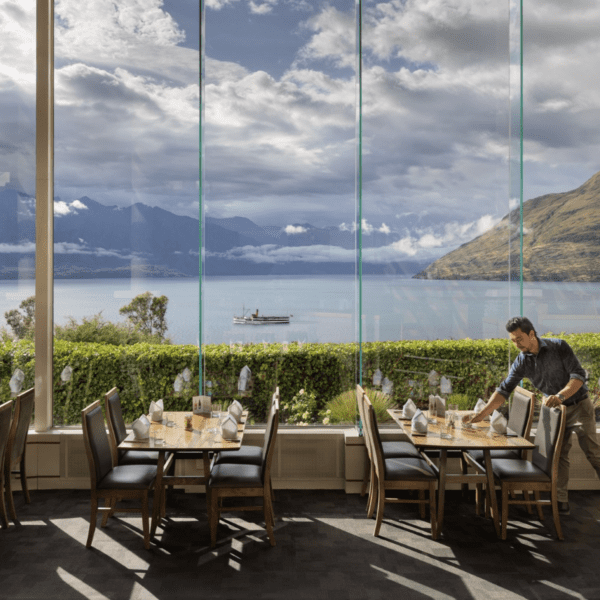Attracting new guests is a challenge hotels face every day. And while posting information on an online travel agency (OTA) provides exposure to potentially millions of travelers, hotels strive to drive bookings directly through their own websites to avoid costly OTA commission fees. One way to do this is to create special packages and activities that target the interests of potential guests.
Since all travelers eat, food is a natural starting point when creating such packages. And food is now a significant part of the travel-planning process: A 2013 report from Mandala Research reveals that 39 million American leisure travelers choose a location based on what food and drinks they can sample there.
With the growing popularity of culinary-based travel, now is a great time for hotels to think beyond their on-site restaurants to create activities and packages that showcase the flavors of their unique location. For this report, Software Advice surveyed preferred activities of culinary travelers and, using these findings, explains how software can help hoteliers facilitate them to increase bookings.
Half Find Local Food and Drink ‘Very Important’ While Traveling
To start, we wanted to find out just how important enjoying or learning about local food and drink is to travelers. Exactly half say it’s “very important,” while another 41 percent call it “moderately important.” Nine percent respond that food is “minimally important” while traveling, and no one says it is “not at all important.”
Importance of Local Food and Drink for Travelers
Food television is now prime-time entertainment with the rise of celebrity chefs, while millennials are ushering in an era of widespread culinary appreciation in the U.S. Together, these trends have created a new foodie culture that seeks diverse, exciting new dining experiences and uses food as a way to convey status, as noted in a Washington Post piece.
Erik Wolf is founder and executive director of the World Food Travel Association, which helps foster successful companies in the food tourism industry. He says this new appreciation for food in popular culture is carrying over into other aspects of life, including travel.
“We take those interests and hobbies and enthusiasm with us when we are on the road,” he explains.
And food and drink is increasingly a major part of travel and hospitality. Most large chain hotels house a restaurant and bar, provide room service and emphasize breakfast offerings. At some independent bed-and-breakfasts, guests can eat local foods sourced from a farmer’s market. And some smaller hotels, such as Blackberry Farm in Tennessee, build their entire character around the local food and agriculture.
Indeed, culinary tourism, defined here as “traveling for the purpose of exploring food,” boasts compelling numbers: about 131 million Americans, or 77 percent of all U.S. leisure travelers, can be classified as “culinary travelers,” according to the previously referenced Mandala Research report.
Nearly One-Third of Travelers Interested in Farm-to-Table Trends
Next, we asked respondents about the food trends they’re most interested in learning about or experiencing while traveling. Thirty-one percent are interested in the farm-to-table movement, which emphasizes the benefits of choosing locally grown or raised foods and sustainable farming practices. Another 26 percent are interested in food trucks, and one-quarter would prefer to learn about or try organic foods.
A smaller portion, 17 percent, say they are interested in molecular gastronomy, which refers to modern cuisine that emphasizes experimentation and explores the science behind how food is prepared.
Traveler Interest in Food Trends
A 2014 USDA report claims the demand for local food stems in part from consumers’ perceptions that local foods are higher-quality and fresher than imported foods, that buying locally increases trust with growers and that this supports small businesses in their communities. Food trucks, the second most popular trend among our sample, are expected to constitute a $2.7 billion industry by 2017, with dozens of trucks rolling around most major cities, including Los Angeles, Washington DC and Austin, Texas.
That travelers are most interested in these trends makes sense to Wolf, who adds that “we are seeing tremendous interest in authenticity, so people are interested in experiencing what a location is known for.”
So, let’s say a hotel wants to offer guests a farm-to-table experience in its restaurant. Many states or regions have organizations dedicated to helping restaurants access locally grown foods or connect with producers, such as Farm-to-Table New Mexico or Texas Farm-to-Table. Hotels can contact these organizations to find local farmers, and some even allow buyers to order specific products for shipping.
Hoteliers and their restaurant chefs can also find local farmers markets through the USDA website or LocalHarvest.org, and visit them to find what fruits, vegetables, meats and other products are available during which seasons. The National Restaurant Organization, the largest food-service trade organization in the world, suggests visiting markets later in the day to see what items are overstocked to find the best bulk deals, and making connections with farmers there to build relationships.
Those who prefer a more hands-on approach can create a small garden on the hotel property. Many restaurants already do this: A University of Chicago study from 2012 found that about one-third of surveyed restaurants had on-site gardens. Once up and running, there are several benefits an on-site garden can offer, including:
- Decreased food-supply costs;
- Increased profits from customers who are willing to pay more for local foods; and,
- Green marketing opportunities, showcasing photos and videos of the garden.
Another option is to tap into the food truck trend and hire the city’s most popular vendors to park outside the hotel during certain hours of particular days. Websites such as RoamingHunger.com give businesses an easy way to book a food truck.
Hotels can use a customer relationship management (CRM) system, either included as part of a hotel management system or integrated with it, to inform current and past guests by email of the days the truck will be on-site and offer a code for discounted food for those who book a room during that time. The hotel can promote the truck via Twitter, Facebook and Instagram.
Finally, hotel management software with a website builder tool (or a third-party website building service) can help create a landing page to track the number of people who click through the post for a given event. Monitoring the number of click-throughs and conversions on the landing page can give hotels an idea of what offers guests respond to most. And hotels can capture information about those travelers and reach out to them with future offers.
Food Festivals and Wine Tastings Most Popular Culinary Events for Travelers
Next, we decided to ask more specifically about the types of culinary events respondents want to participate in while traveling. The highest percentage of travelers say they would prefer to attend a food festival (24 percent). Wine tastings and vineyard tours rank second, (19 percent), followed by brewery tours (18 percent).
Preferred Culinary Activities While Traveling
In response to the growing interest in food culture mentioned above, food and wine festivals have become increasingly popular. Today, they rank as the preferred kind of festival or event overall for U.S. travelers.
Food festivals can include local specialties, such as the Taste of Chicago, or events that contribute to a cause, such as the New Orleans Wine and Food Festival benefiting organizations that promote culinary education. Some feature a more specific aspect of food, such as the Portland Eat Mobile Festival’s focus on food trucks, and others that are hosted by large companies, such as the Wine & Food Festival at Hotel Hershey.
The annual Hotel Hershey Wine & Food Festival in Hershey, PennsylvaniaTo find participants for an on-site food festival, hotels can contact their city or state restaurant association and ask about establishments that use local foods. Alternatively, hoteliers can easily search for these establishments on Yelp by choosing their city and typing “locally sourced restaurant.” (Local farmers and farmers markets can also be festival participants.)
Searching Yelp for locally sourced restaurants in Charleston, South CarolinaHotels can contact these restaurants to coordinate a regular event where guests sample dishes and learn about the area’s food culture. They can then create a package for guests who attend the festival, and promote it through the hotel and restaurant’s social media channels.
Creating special packages in eZee FrontDeskVipul Kapoor is the co-founder and chief technology officer for eZee Technosys, provider of eZee FrontDesk (shown above). Kapoor says hoteliers can use hotel management software to create a special package deal that offers a small discount on a booking during the time of the event. For example, the description that appears on the hotel website could read: “Book during the Taste Charleston event for 10 percent off your reservation.” This package can then be shared on social media with a link to the landing page.
Along with the growing enthusiasm for food, consumer interest in beverages, such as beer and wine, has also grown. Wine consumption has risen in the U.S. consistently for the past 75 years. Fine wine sales are expected to grow by as much as 18 percent in 2015, according to the Silicon Valley Bank, one of the world’s largest providers of financial services for wineries. And U.S. sales of craft beers—defined as beers made by small, independent breweries—saw an 18 percent increase in 2014.
Many hotel management systems, such as eZee Absolute from eZee Technosys, include integration with social media networks, allowing guests to book a room directly from that platform. So, promoting this package on Facebook, for example, can lead to bookings from new guests who are “friends” or followers of the wineries and breweries.
The Facebook booking engine provided by eZee Absolute
Millennials Are Most Likely to Share Food Photos on Social Media
Gaining followers and mentions for a hotel’s Twitter, Facebook or Instagram account is an important part of marketing today, but the direct benefits can be tricky to discern.
We asked respondents how often they take and share photos or food experiences on social media while traveling. Breaking down these responses by age, we find that younger age groups are the most frequent sharers; Of those who say they share food-related social media posts “very often,” 45 percent are between the ages of 26 and 35. Another 21 percent are 18- to 25-years-old.
Travelers Who Post Food-Related Social Media Posts Very Often, by Age
What’s more, encouraging guests to share food photos can lead to increased bookings. A University of Florida and Clemson University study showed that more than 54 percent of respondents would be motivated to go to a destination based on pictures of food.
During culinary events, such as a food festival or cooking class, Wolf says, hotels can take advantage of guests’ desire to share on social media by using it to drive a contest. (This strategy is similar to the examples shown in a past Software Advice report on Instagram techniques.) For instance, the hotel might encourage cooking-class participants to snap photos of their completed creation, post it on Instagram with a unique hashtag and award the user with the most attractive dish with a discount for a return stay.
With this, the hotel’s social media feed will have fresh photos from real guests. This is uniquely beneficial, as 92 percent of consumers worldwide trust word of mouth over any other type of advertising. Thus, a slew of consumer-generated content on a hotel’s social account can potentially drive more bookings.
“You’re meeting people on the level they’re familiar with, [while] getting additional marketing leverage for the brand,” Wolf says.
Guests Prefer a Variety of Notification Methods for Culinary Activities
Finally, after creating a special culinary travel package, it’s important to know the best way to notify former and potential guests about the offering. We asked the travelers in our sample how they would prefer to receive such notifications.
More than one-quarter of respondents (26 percent) say they would prefer to learn about them in-person, during check-in. Twenty-five percent would prefer to see activities on the hotel website, and 22 percent would like to receive an email about them.
Travelers’ Preferred Notification Method for Culinary Activities
As we noted above, special food activities and packages can be marketed through email, hotel websites and social media. However, since these channels place high on the list along with in-person notifications for our respondents, a multi-channel approach will likely be the most effective for event promotion.
“In any kind of marketing communication, you need to reach the targeted audience multiple times,” Wolf says. “So one channel is in-person, another would be in-room messaging [and another would be] posters/signs in the lobby or elevator.”
Examples of in-room messaging could be informational cards left on the bed or nightstand or a message on the television. Many hotels have even installed self-service kiosks at the front desk, which can present special offers or promote food activities as guests check in.
Dining landing page on the Inn at Fox Hollow websiteFor those who want to view activities or packages on the hotel website, hotels should create a landing page listing the packages, descriptions and high-quality photos of food and dining areas. As mentioned above, some hotel management systems offer website tools to build these pages, using photos and an integrated online booking engine to allow guests to quickly book a particular package.
Conclusions
Hospitality companies know food is important to travelers, and our findings back this up. The following tips can help increase interest from culinary travelers in order to increase bookings:
Create offerings centered around popular food trends. Leverage interest in top food trends, such as farm-to-table cuisine and food trucks. Contact local professionals to build a garden, start a locally sourced menu and schedule food truck days throughout the year. Promote these undertakings on social media and the hotel website to attract new and former guests.
Build special packages and offer discounts for favored activities. For specific events, host guests’ favorite activities: food festivals, wine tastings and local brewery offerings. Use hotel management software to create a special package during the event and offer a discount on bookings to draw guests.
Encourage social media engagement during events. Create and promote custom hashtags that boost your hotel’s online presence, and motivate new travelers to book in order to experience the activities. Younger travelers are especially likely to engage this way.
Offer comprehensive information about food activities at check in. Leave marketing materials in rooms and lobbies for guests. A website builder can also be used to create a landing page, while CRM and marketing automation software can help automatically notify travelers by email.
Whatever the activity, it should be focused on the unique ingredients and dishes of the hotel’s surrounding area, and be promoted through a variety of channels to reach the most potential guests. Software that allows hotels to automate promotions, build landing pages and create customized package deals help make these tasks more successful.
Methodology
To collect responses, we surveyed 346 random North American travelers online. The survey consisted of 12 questions, and all results were obtained in a fair and anonymous manner.
Results are representative of our survey sample, not necessarily the population as a whole. User commentary solely represents the views of individuals. Chart values are rounded to the nearest whole number.
If you have comments or would like to obtain access to any of the charts above, please contact taylorshort@softwareadvice.com.
About the Author:
Taylor Short is a Market Research Associate at Software Advice. He previously worked as a reporter and writer for six years, focusing on local coverage of city governments, businesses, schools and police.
After earning a bachelor’s degree in Journalism from the University of North Texas, he worked for newspapers in Denton, Dallas, Argyle, Cleburne, Killeen and Austin. Taylor tutored students in English and writing at Austin Community College and freelanced for Reuters News Agency before joining Software Advice in Fall 2013.


















